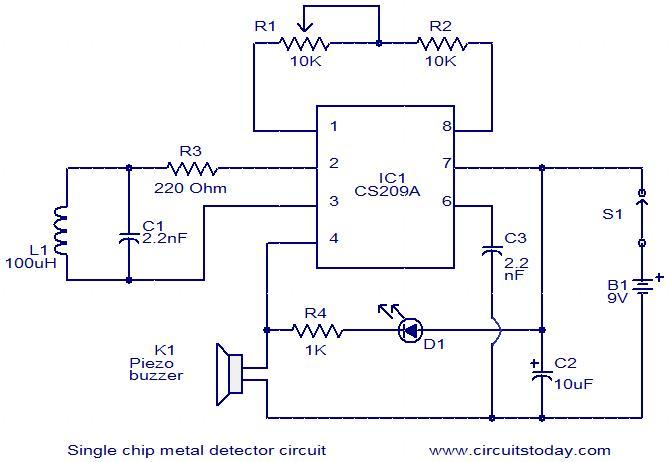
40khz laser burst detector

This circuit was originally designed to detect weak flashes of laser light reflected off a fabric video projection screen. It was utilized as part of a firearm training system. The circuit generates a 100 ms output pulse whenever it detects a 3 ms to 5 ms laser burst, modulated at 40 kHz. It is highly sensitive and can be modified for long-range laser communication.
The circuit employs a photodiode or phototransistor as the primary light detection component. When a laser pulse strikes the sensor, it generates a small current proportional to the intensity of the light. This current is then amplified by a transimpedance amplifier to convert the current signal into a voltage signal suitable for further processing.
The output from the amplifier is fed into a comparator circuit, which is set to trigger at a specific threshold voltage that corresponds to the expected intensity of the laser pulse. When the incoming signal exceeds this threshold, the comparator outputs a high signal that initiates a monostable multivibrator (one-shot timer). This multivibrator is configured to produce a 100 ms output pulse, regardless of the duration of the detected laser burst (within the specified range of 3 ms to 5 ms).
The 40 kHz modulation of the laser pulse can be achieved using a laser driver circuit that modulates the laser diode, ensuring that the emitted light is pulsed at the desired frequency. This modulation allows the detection circuit to differentiate between the laser signal and ambient light, enhancing its sensitivity and reducing false triggers.
For long-range applications, modifications may include the use of a lens system to focus the incoming laser light onto the sensor, increasing the effective detection range. Additionally, the circuit can be integrated with a microcontroller for more advanced signal processing, allowing for features such as adjustable sensitivity, data logging, or wireless communication capabilities.
Overall, this circuit serves as a robust solution for detecting laser pulses in various applications, particularly in training and communication systems.This circuit was originally designed to detect weak flashed of laser light bounced off of a fabric video projection screen. It was used as part of a firearm training system. It generates a 100mS output pulse whenever it detects a 3ms to 5ms-laser burst, modulated at 40KHz. It is very sensitive and could be modified for long-range laser communicati ons. 🔗 External reference
The circuit employs a photodiode or phototransistor as the primary light detection component. When a laser pulse strikes the sensor, it generates a small current proportional to the intensity of the light. This current is then amplified by a transimpedance amplifier to convert the current signal into a voltage signal suitable for further processing.
The output from the amplifier is fed into a comparator circuit, which is set to trigger at a specific threshold voltage that corresponds to the expected intensity of the laser pulse. When the incoming signal exceeds this threshold, the comparator outputs a high signal that initiates a monostable multivibrator (one-shot timer). This multivibrator is configured to produce a 100 ms output pulse, regardless of the duration of the detected laser burst (within the specified range of 3 ms to 5 ms).
The 40 kHz modulation of the laser pulse can be achieved using a laser driver circuit that modulates the laser diode, ensuring that the emitted light is pulsed at the desired frequency. This modulation allows the detection circuit to differentiate between the laser signal and ambient light, enhancing its sensitivity and reducing false triggers.
For long-range applications, modifications may include the use of a lens system to focus the incoming laser light onto the sensor, increasing the effective detection range. Additionally, the circuit can be integrated with a microcontroller for more advanced signal processing, allowing for features such as adjustable sensitivity, data logging, or wireless communication capabilities.
Overall, this circuit serves as a robust solution for detecting laser pulses in various applications, particularly in training and communication systems.This circuit was originally designed to detect weak flashed of laser light bounced off of a fabric video projection screen. It was used as part of a firearm training system. It generates a 100mS output pulse whenever it detects a 3ms to 5ms-laser burst, modulated at 40KHz. It is very sensitive and could be modified for long-range laser communicati ons. 🔗 External reference





